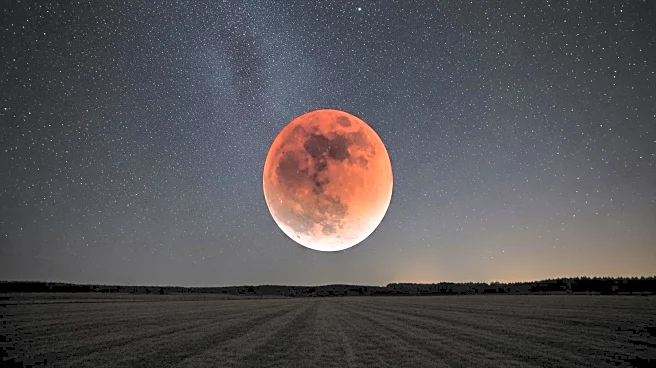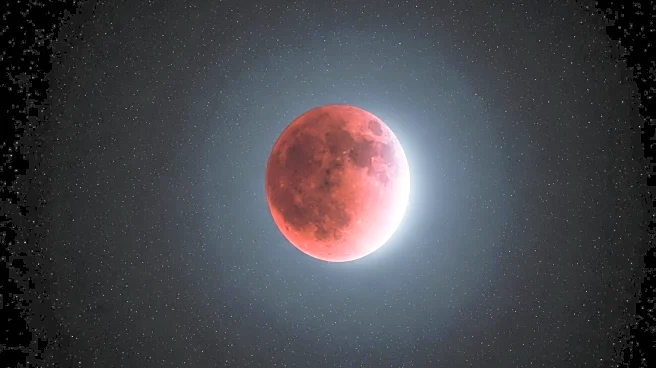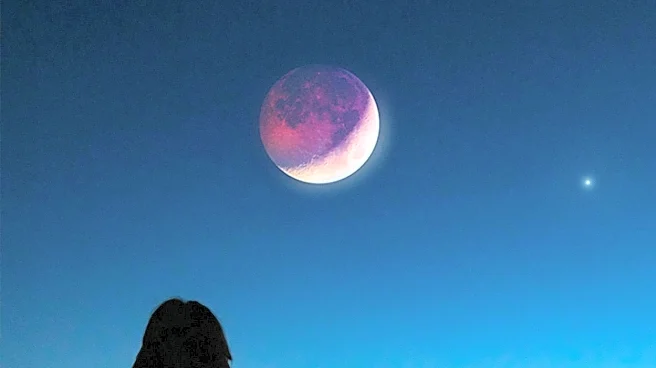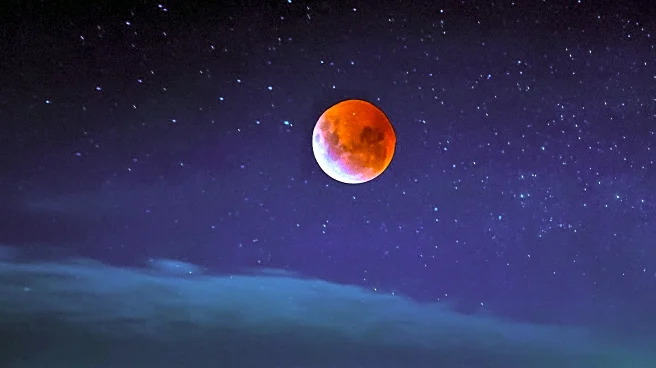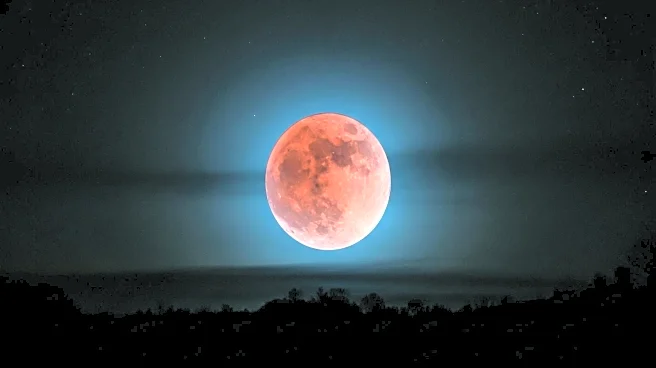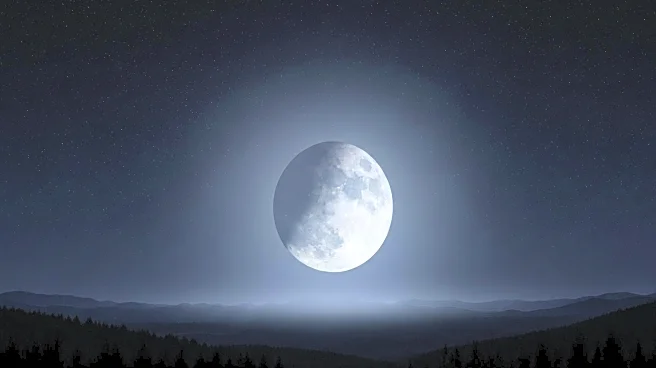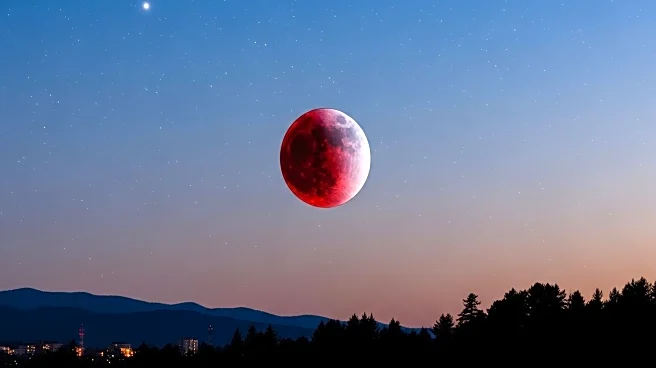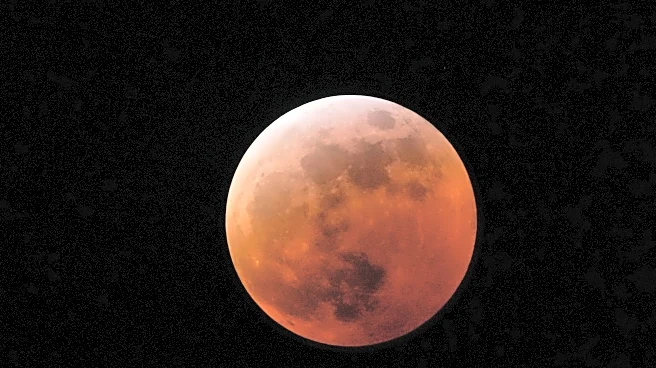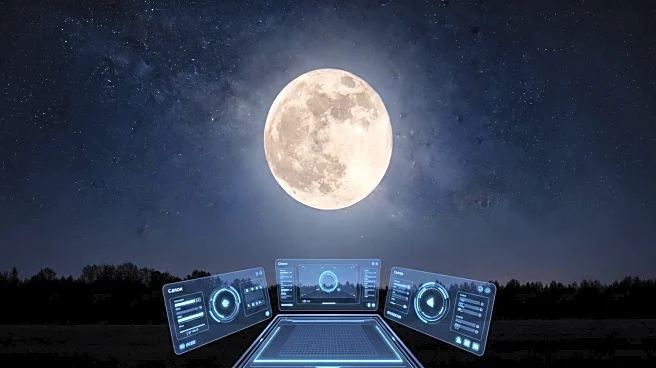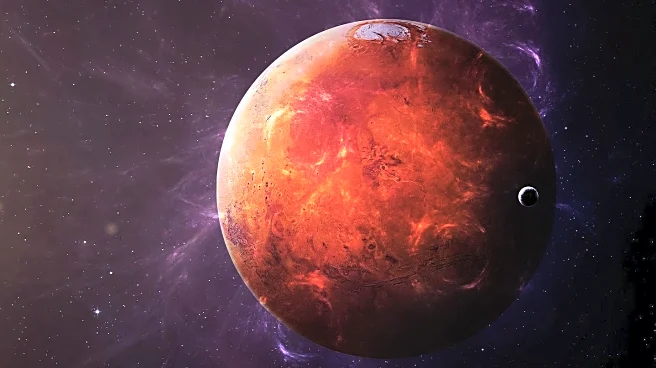What's Happening?
A spectacular blood moon is set to appear during the total lunar eclipse this weekend, visible across Asia, Australia, Africa, and Europe. The Americas, however, will miss this celestial event. The eclipse will cause the moon to take on a deep red hue as Earth's shadow covers it. Unlike solar eclipses, lunar eclipses are safe to view without protective eyewear, offering a unique opportunity for skywatchers in visible regions. The eclipse will be particularly dramatic as the moon passes through the darkest part of Earth's shadow, promising a captivating display.
Why It's Important?
Lunar eclipses are significant for astronomers and enthusiasts, providing opportunities for observation and study. This event highlights the interconnectedness of global skywatching communities, as enthusiasts share experiences and data. The absence of visibility in the Americas may lead to increased interest in future celestial events, fostering educational and cultural exchanges. The event underscores the importance of astronomical phenomena in inspiring public interest in science and nature.
What's Next?
For those in the Americas, anticipation builds for the next visible total lunar eclipse scheduled for March 2-3, 2026. Enthusiasts can engage with live coverage and updates through online platforms, ensuring they remain connected to global astronomical events. This may lead to increased participation in local astronomy clubs and educational programs.
Beyond the Headlines
The cultural significance of lunar eclipses can be profound, often linked to myths and traditions across different societies. This event may inspire artistic and literary expressions, reflecting humanity's fascination with the cosmos. Long-term, it could encourage greater investment in astronomical research and public science education.
